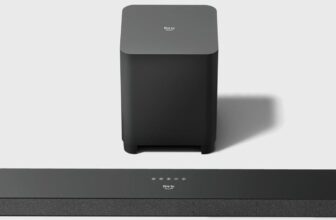NASA’s Webb area telescope has captured haunting new views of Jupiter’s auroral show, revealing the brilliant mild present in beautiful, never-before-seen particulars. Utilizing the telescope’s most up-to-date observations of the gasoline big, scientists uncovered a curious discrepancy between how Jupiter’s auroras seem to Webb versus Hubble.
Webb’s NIRCam (Close to-Infrared Digital camera) zoomed into Jupiter’s poles to seize the planet’s fast-varying auroral options, that are 100 instances brighter than those seen on Earth.
“We wished to see how shortly the auroras change, anticipating them to fade out and in ponderously, maybe over 1 / 4 of an hour or so,” Jonathan Nichols, a researcher on the College of Leicester in the UK, and lead creator of a brand new paper revealed within the journal Nature Communications, mentioned in a statement. “As an alternative, we noticed the entire auroral area fizzing and popping with mild, generally various by the second.”
On Earth, auroras happen when energetic particles from the Solar work together with the planet’s magnetic subject and its ambiance, creating shimmering shows of sunshine throughout the skies often called the Northern and Southern Lights. Except for the Solar’s particles, Jupiter has an extra supply that creates its auroras. Jupiter’s robust magnetic subject grabs charged particles from its environment and accelerates them to excessive speeds. These speedy particles, a few of that are thrown into area by Jupiter’s orbiting moon Io, slam into the planet’s ambiance at excessive energies and excite the gasoline, inflicting it to glow.
Utilizing Webb’s latest observations of Jupiter’s aurora, the scientists studied emissions from a molecule known as trihydrogen cation. The particular molecule is shaped when energetic particles rip an electron off of a hydrogen molecule, and that molecule then reacts with different hydrogen molecules. The examine discovered that the trihydrogen cation emissions are way more variable than they beforehand believed. Understanding the habits of the particular molecule helps scientists higher perceive how Jupiter’s ambiance cools and heats.
The scientists additionally took photos of Jupiter’s auroras with NASA’s Hubble House Telescope on the identical time Webb made its observations, capturing them in ultraviolet mild. They uncovered a wierd discrepancy between the 2 units of information, the brightest mild noticed by Webb had no actual counterpart within the Hubble photos.
“This has left us scratching our heads,” Nichols mentioned. “To be able to trigger the mix of brightness seen by each Webb and Hubble, we have to have a mixture of excessive portions of very low-energy particles hitting the ambiance, which was beforehand considered unimaginable. We nonetheless don’t perceive how this occurs.”
The group plans on finishing up follow-up observations of Jupiter’s auroras utilizing Webb and evaluate them to knowledge collected by the continued Juno mission. The spacecraft has been orbiting the gasoline big since 2016, capturing Jupiter and its moons in beautiful element. Webb beforehand captured images of Jupiter’s glowing auroras at its north and south poles, offering scientists with a brand new perspective of the planet’s mild show in infrared wavelengths.
Trending Merchandise

CHONCHOW LED Keyboard and Mouse, 104 Keys Rai...

HP Notebook Laptop, 15.6″ HD Touchscree...

Wireless Keyboard and Mouse Combo, MARVO 2.4G...












